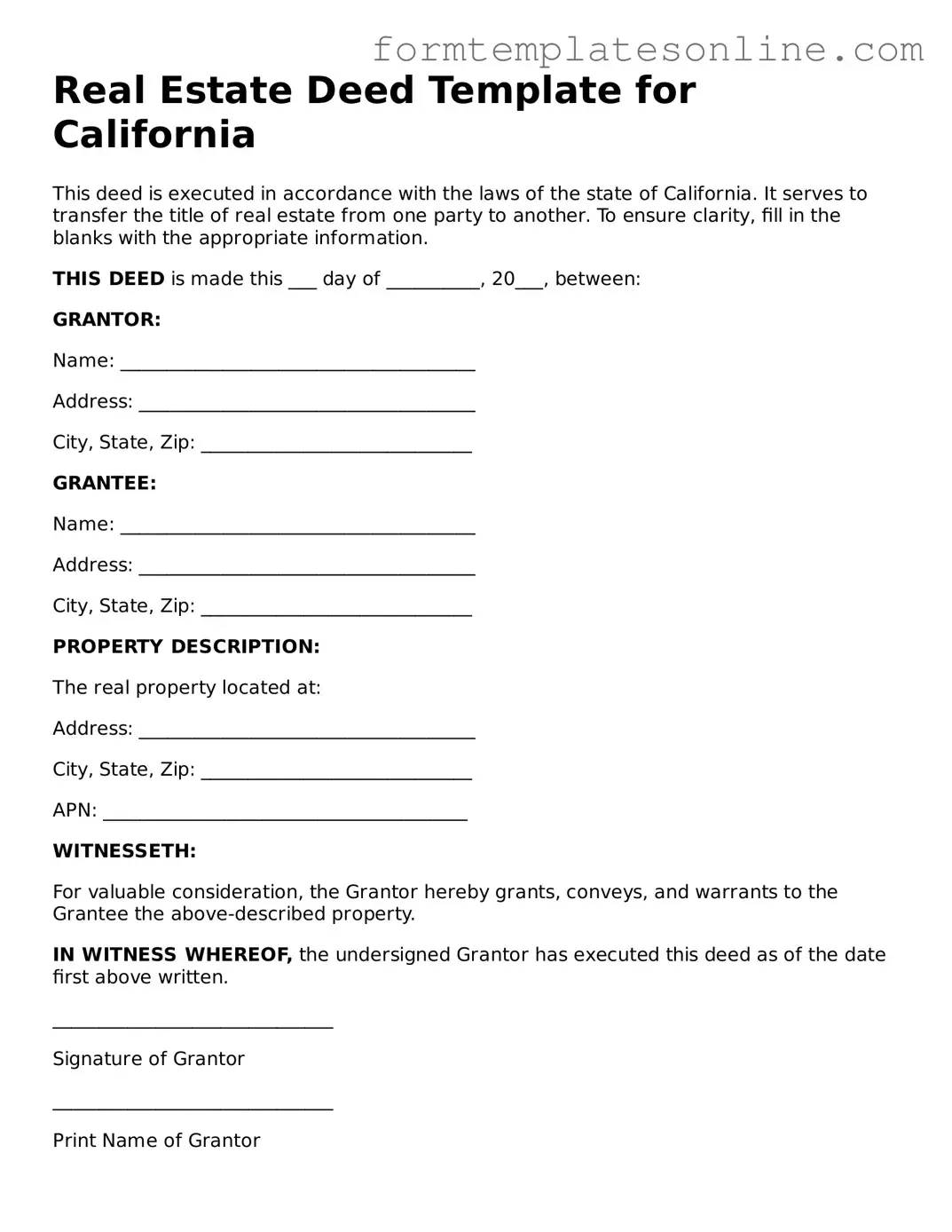Real Estate Deed Template for California
This deed is executed in accordance with the laws of the state of California. It serves to transfer the title of real estate from one party to another. To ensure clarity, fill in the blanks with the appropriate information.
THIS DEED is made this ___ day of __________, 20___, between:
GRANTOR:
Name: ______________________________________
Address: ____________________________________
City, State, Zip: _____________________________
GRANTEE:
Name: ______________________________________
Address: ____________________________________
City, State, Zip: _____________________________
PROPERTY DESCRIPTION:
The real property located at:
Address: ____________________________________
City, State, Zip: _____________________________
APN: _______________________________________
WITNESSETH:
For valuable consideration, the Grantor hereby grants, conveys, and warrants to the Grantee the above-described property.
IN WITNESS WHEREOF, the undersigned Grantor has executed this deed as of the date first above written.
______________________________
Signature of Grantor
______________________________
Print Name of Grantor
NOTARY ACKNOWLEDGMENT
State of California
County of ____________________
On this ___ day of __________, 20___, before me, ________________, a Notary Public in and for said State, personally appeared ____________________, known to me to be the person whose name is subscribed to the within instrument.
WITNESS my hand and official seal.
______________________________
Signature of Notary Public
My Commission Expires: _______________
